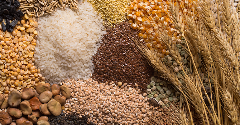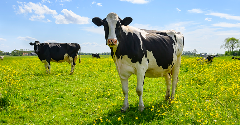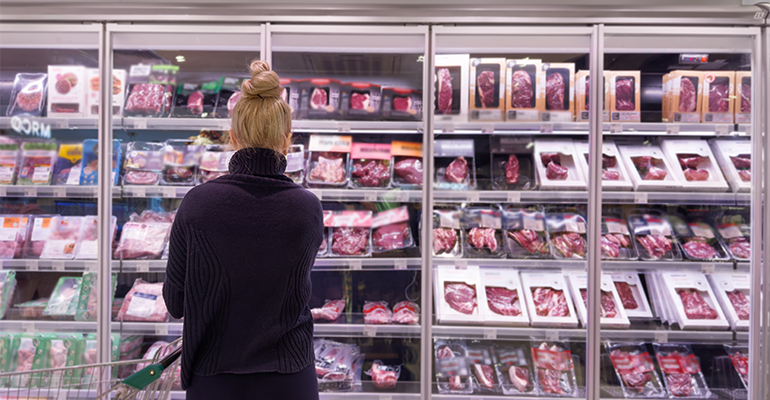News
Bayn researching e-sensory technology to optimize sugar reduction
12 Apr 2018As part of the development of Bayn Europe AB’s cloud-based platform and e-sensory tool for sugar reduction, the sugar reduction specialist is performing research into using e-sensory technology to optimize sugar reduced recipes.

As part of the development of Bayn Europe AB’s cloud-based platform and e-sensory tool for sugar reduction, awarded the Seal of Excellence by the EU Commission for the EU Horizon 2020 and funded by Vinnova, the sugar reduction specialist is performing research into using e-sensory technology to optimize sugar reduced recipes. Mathias Lundgren, PhD. Physical Chemistry, has worked with gingerbread cookies, mapping the aroma profile of different recipes to find ways to better mimic the original gingerbread cookie when reducing sugar in the recipe.
Traditionally, human sensory panels have been used to map the taste profile of food products, but in recent years new technologies have also made it possible to measure sensory properties and translate the results into the language of human sensory. In electronic sensory (e-sensory) of food and beverages, measurements are selected which give a direct relation to the human sensory attributes. To each sample tags such as experience, feelings and memories can also be attached. In the study, aroma profile analyses have been used to compare a sugar reduced gingerbread cookie with the original full sugar recipe.“To replace sugar is not an easy task for the food industry as sugar is not only added to sweeten, but also plays an important role for texture, taste and colour. The use of e-sensory has been shown to be a valuable tool when developing new recipes of food products to match the aroma profiles to the target recipe. Looking at the results from the study I believe that using modern technology, such as e-sensory, can be an excellent and effective tool to reach healthier sugar reduced products,” said Mathias Lundgren, PhD. Physical chemistry, Bayn Europe AB.For the study, two recipes of gingerbread were prepared. The sugar reduced gingerbreads were made by replacing the sugar with Eureba Bakery Blend. To compare the sensory data measured from the two recipes, an e-sensory aroma database with data from ten different gingerbread cookie manufacturers in the Swedish market was used. It was found that different aroma profiles were found in the two recipes. Based on the e-sensory analysis, Lundgren learnt that adding more cinnamon or orange peel to the sugar reduced recipe would make the sensory more like the original recipe.“E-sensory technology is one of the components that will be used on the cloud platform that Bayn Europe is currently building. Looking at the results from the gingerbread study, we can see that e-sensory can successfully be used to help optimize sugar reduced recipes to be more like full sugar recipes. We are certain that this technology development can shorten the development time and eliminate the risk of uncertainty for food and beverage producers looking to reduce sugar. We will now continue to conduct research using e-sensory on other types of recipes,” said Patrik Edström, CEO, Bayn.Related news

Sustainable grains present a healthy growth opportunity
3 Oct 2024
Food insights provider SPINS unveils the latest trends in the sustainable grains field, exploring how seven leading grains show healthy growth despite challenges in the global value chain.
Read more
Will we see a wave of NPD that focuses on insulin management?
1 Oct 2024
As a new study finds protein and fats can help manage insulin, food manufacturers are building on emerging GLP-1 platforms and supporting nutritional guidance.
Read more
New environmental food scoring standards emerge
30 Sep 2024
EIT Food and Foundation Earth collaborate to launch environmental food scoring for products entering the global supply chain.
Read more
Africa progresses with food transformation strategy
19 Sep 2024
Large-scale efforts are underway to drastically change the African food sector with a $61 billion (€55 bn) set of proposed transformation plans to be implemented across forty countries. Yet there are concerns that this initiative severely jeopardises s...
Read more
European Commission releases new supply chain recommendations
6 Sep 2024
The European Union’s (EU) legislative arm publishes its latest guidance on protecting the market’s food supply chain against current and future crises.
Read more
Tesco trials methane mitigation supplement for dairy cattle
5 Sep 2024
Tesco is trialing a methane-reducing feed supplement for one of its key UK dairy farms, sustainable UK milk producer Grosvenor Farms.
Read more
European consumers want more freedom to choose biotech-based food
3 Sep 2024
Survey findings point to growing levels of interest in cultivated meat as European consumers say they want the freedom to choose the lab-based products.
Read more
Will ‘foie gras’ become the EU’s first approved cultivated meat?
20 Aug 2024
French startup Gourmey has submitted its cultivated foie gras for approval in the European Union (EU), signalling the first application of its kind in the region.
Read more
Europe gravitates to African spices
19 Aug 2024
Shipping delays, limited production output and climate change impact Europe’s spice supply, creating opportunities for African brands to enter the captive market.
Read more
Paris Olympics: Food and beverage brands champion health, fun, and sustainability
5 Aug 2024
Food and beverage brands are aligning with the Paris Olympics 2024 Food Vision, which emphasises sustainability, local sourcing, and plant-based diets.
Read more